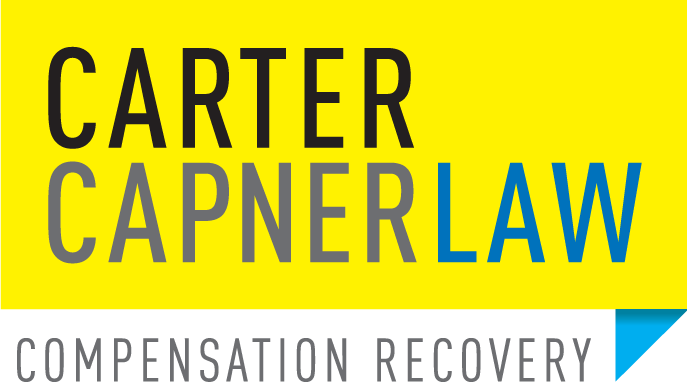May 21 that had that extraordinary episode of turbulence where the plane plummeted and sent people to the roof. Of course, one man, a British citizen, he died of a heart attack during all of that. Others remain seriously injured. There is the pursuit of Singapore Airlines by a law firm that are looking at whether or not the airline followed the sort of protocols that should be in place when approaching storms, et cetera. Now, there’s been a Transport Safety Investigation Bureau of Singapore report, which is a preliminary one, and it raises some new questions. So let’s go to Peter Carter, director of Travel and Airline Compensation at Carter Capner Law, joins me on the line. Good day, Peter.
Peter Carter (00:47):
Good day, Gary. How are you?
Gary (00:47):
Yeah, good. So what have you learned from this report?
Peter Carter (00:50):
Well, the report is just in the form of a press release, one and a half pages. It’s light on detail, and the story that the airline is wanting to proliferate is that this was as a result of clear air turbulence. The report itself says that the press release itself says that the aircraft was likely flying over convection below. Now that means storms. My point is though that the airlines should be telling us more. How close did they get to the storm? What is their mandated safety distance in miles from storms? And why didn’t the aircraft divert?
Gary (01:35):
Is there protocols around that? I mean, do you know, for example, whether airlines have a rule around avoiding storms as best they can and when and how?
Peter Carter (01:45):
Every airline will have in its operation manual the distance that the crew must keep from thunderstorms, 20 miles, or it could be lower, but 20 nautical miles is common.
Gary (01:58):
Right, because the scenario here is that it was such a sudden reaction that there was barely time to get people to sit down or be seated, put their seat belts on. That’s what we’re hearing.
Peter Carter (02:11):
That’s-
Gary (02:12):
But the airlines say that they did put up the warning.
Peter Carter (02:15):
Well, the advice from our clients is that that only came up after the incident occurred. There was no warning before, absolutely no warning before to be seated or to put seat belts on.
Gary (02:28):
Right. So can I ask you whether from your point of view as a law firm, whether you’re seeking the access to all of this from Singapore Airlines and whether from a jurisdiction point of view you have it?
Peter Carter (02:43):
Well, we just want more information. I don’t think it’s fair to the passengers of this flight or passengers on any, people getting on airlines today and tomorrow for the story about clear air turbulence to be proliferated when it’s equally arguable it was a thunderstorm issue. Thunderstorms are predictable if the crew were intensely monitoring their weather radar, as you’d expect when entering an area over the Andaman Sea where storm buildup is notorious.
Gary (03:20):
Right. You were also asking the question around what was the effect on unrestrained passengers of applying speed breaks? What do you know about that from what the release said?
Peter Carter (03:30):
Well, look, that’s an issue that is one of the least important issues, I mean, but there are technical issues. We probably won’t… The airline deserves some time, too, for the investigators to investigate relating to the use of the autopilot, and so there are some things there that need to be explained, but at the moment, we just want to know what were the air crew doing, what the distance was. They should have been keeping away from storms. Other aircraft diverted at around the same time, before and after this aircraft, in the same area. And what did the crew consider in relation to that, and why didn’t the diversion occur? I think the passengers deserve to know this because it’s an important factor in terms of their recovery.
Gary (04:24):
Right. But from your point of view, I mean, clearly, the airline would need, and the other authorities would need time to be certain of all that through flight recordings, et cetera. You’re prepared to give them a bit of time here. I mean, it was only May 21.
Peter Carter (04:39):
True, but some of it would be known to them now, and the issue of the storm proximity is something that is an equally plausible theory and no weight, very little weight has been given to that by the airline, and it’s up to them to clarify it in my opinion.
Gary (05:02):
All right. Hey, just given your experience as a lawyer in the field of aviation, I’ll ask you this. Emirates are already talking about making it mandatory. They haven’t decided holus-bolus, but they’re talking about mandatory seat belts when people are seated. I mean, it makes sense, doesn’t it?
Peter Carter (05:21):
Yes, it does. It certainly does, but people have to get up and go to the bathroom. People have to tend to infants. That’s important, but that’s also equally important, my point is equally important to that in that if this was avoidable thunderstorm, it’s a different kettle of fish to clear air turbulence, completely different kettle of fish. It could have been if it was a thunderstorm that they came into proximity with, that could have avoided. And every pilot, every airline pilot in that area has the job of avoiding thunderstorms. So therefore, it shouldn’t be raised to the level of airlines saying it’s going to be, you have to have mandatory seat belts on for the whole of the flight.
Gary (06:14):
Right. Because this has come out of the fact that by coincidence, there’s the International Air Transport Association’s AGM meeting. It’s been in Dubai. They’re saying that obviously, the turbulence issue was at top of the agenda. Would you expect, would you be expecting from a liability point of view now that all airlines would just make it mandatory and police it better than they perhaps do? I’m not saying that’s easy, but to police it on flight during trips than they do?
Peter Carter (06:44):
I think we’ll find that the trend will be in that direction. But because this accident has been the catalyst for this talk, that’s why we need to know now what the airline knows already about its cause.
Gary (07:01):
Right. And at this stage, you’re saying from your point of view and your clients’ point of view, you don’t have the answers around how far away the storm was, how much warning they had, and therefore, how much warning they gave passengers.
Peter Carter (07:14):
Oh, they certainly didn’t give passengers any warning. Our theory, our working theory for the accident is that the aircraft flew through the top of a storm or close to one. So that’s what is equally plausible, and that’s what we should hear from the airline about.
Gary (07:34):
All right. Well, hopefully, we will. I do, because I’m about to hit home and anyone I think that’s going to be flying in the next few months, et cetera, are probably wondering whether or not… I mean, look, common sense, Peter, would tell you that having seen and heard what we’ve seen from a couple of incidents in recent weeks and months, it’s probably the best deal is when you’re sitting down, put your belt on. Yeah?
Peter Carter (07:58):
Oh, I totally agree. No question.
Gary (08:00):
Yeah, common sense. All right, thanks very much for that, Peter. We’ll keep in touch.
Peter Carter (08:05):
Thanks, Gary.
Gary (08:05):
Peter Carter there. He is from Carter Capner Law firm, and they are pursuing Singapore Airlines, no doubt about it. They want answers to what the lead up to that very serious and including fatal situation was with that turbulence. But look, from your point of view, if you’re getting on a plane again, would you just leave your belt on all the time? Has this changed the way that you think about it? Because it was always to some, we all sit there and we watch the stewards and the stewardesses go through the whole protocol about leaving your seatbelt up even if you’re seated and there’s no issue just leaving it done up all the time. Are you going to do that? Has it change the way you think? Scared the crap out of you? Has me. 133882 is the number. We’ll be back…


